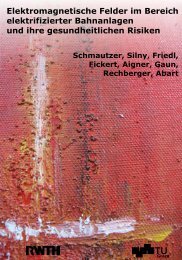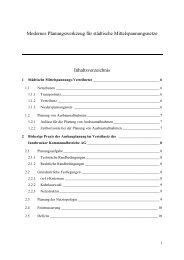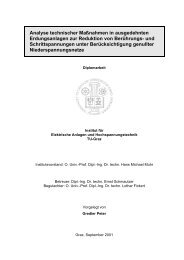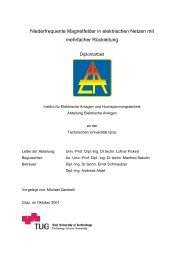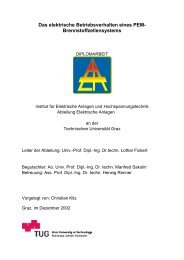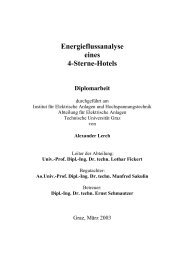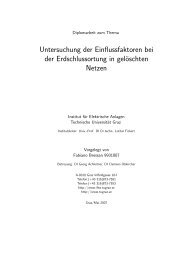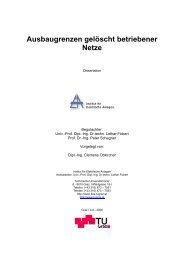Development of a wavelet-based algorithm to detect and determine ...
Development of a wavelet-based algorithm to detect and determine ...
Development of a wavelet-based algorithm to detect and determine ...
Create successful ePaper yourself
Turn your PDF publications into a flip-book with our unique Google optimized e-Paper software.
4.2. SOURCES OF TRANSIENT DATA 19<br />
capability <strong>of</strong> utilizing digital data from other devices.<br />
4.2 Sources <strong>of</strong> transient data<br />
There are several possible sources <strong>of</strong> transient data for exchange:<br />
• Digital fault recorders<br />
Digital fault recorders for moni<strong>to</strong>ring power-system voltages, currents <strong>and</strong> dig-<br />
ital events are supplied by several manufacturers. Typical recorders moni<strong>to</strong>r 16<br />
<strong>to</strong> 64 analog channels <strong>and</strong> a comparable number <strong>of</strong> event (contact status) inputs.<br />
Sampling rates, analog-<strong>to</strong>-digital converter resolution, record format, <strong>and</strong> other<br />
parameters have not been st<strong>and</strong>ardized.<br />
• Digital protective relays<br />
New relay designs using microprocessors are currently being developed <strong>and</strong><br />
marketed. Some <strong>of</strong> these relays have the ability <strong>to</strong> capture <strong>and</strong> s<strong>to</strong>re relay input<br />
signals in digital form <strong>and</strong> transmit these data <strong>to</strong> another device. In performing<br />
this function, they are similar <strong>to</strong> digital fault recorders, except that the nature<br />
<strong>of</strong> the recorded data may be influenced by the needs <strong>of</strong> the relaying <strong>algorithm</strong>.<br />
As with the digital fault recorders, record format <strong>and</strong> other parameters have not<br />
been st<strong>and</strong>ardized.<br />
• Transient simulation programs<br />
Unlike the above devices which record actual power system events, transient<br />
simulation programs generate transient data <strong>based</strong> on mathematical models <strong>of</strong><br />
power systems. Because this analysis is carried out by a digital computer, the<br />
results are inherently in digital form suitable for digital data dissemination. An<br />
example for such a simulation program is the SABER simula<strong>to</strong>r [2].<br />
While originally developed for the evaluation <strong>of</strong> transient overvoltages in power<br />
systems, these programs are finding increasing usage in other types <strong>of</strong> studies, in-<br />
cluding test cases for digital relaying <strong>algorithm</strong>s. Because <strong>of</strong> the ease with which



